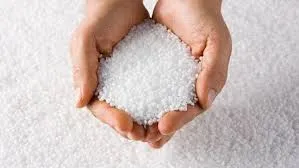Chemical Additives in Plastics An Overview
Plastics are ubiquitous materials in our daily lives, found in everything from packaging to automotive components, electronics, and household goods. The versatility, lightweight nature, and durability of plastics make them invaluable; however, achieving these properties often necessitates the use of chemical additives. This article aims to explore the various types of chemical additives used in plastics, their functions, and the ongoing discussions regarding their safety and environmental impacts.
Types of Chemical Additives
Chemical additives are substances added to plastics to enhance their performance characteristics. These additives can be classified into several categories based on their functions
1. Stabilizers These additives are essential for prolonging the lifespan of plastics by preventing degradation due to heat, light, or oxidation. For instance, UV stabilizers are used to protect materials from ultraviolet light, which can cause discoloration and loss of physical properties.
2. Plasticizers Plasticizers are used to increase the flexibility and workability of plastics. Polyvinyl chloride (PVC) is a common plastic that often employs phthalates as plasticizers, allowing it to be manufactured into softer, more pliable forms.
3. Fillers Fillers, such as talc or calcium carbonate, are added to enhance the mechanical properties of plastics, reduce costs, and improve processing characteristics. While they add bulk, they can also affect the opacity, strength, and overall aesthetic of the final product.
4. Flame Retardants To enhance the fire resistance of plastic products, flame retardants are added. These substances interfere with the combustion process, helping to slow down or prevent the spread of flames.
5. Colorants Colorants, including pigments and dyes, are used to give plastics their desired color and improve appearance. They can also provide functional properties, such as enhanced visibility or masking of defects.
6. Antioxidants These additives are crucial for preventing oxidative degradation, particularly in polyolefins and other plastics exposed to heat and light during processing.
chemical additives in plastics

7. Antimicrobial Agents With increasing concerns about hygiene, especially in consumer products, antimicrobial agents are added to plastics to prevent microbial growth and enhance hygienic properties.
Health and Environmental Considerations
While chemical additives impart beneficial properties to plastics, they also raise significant health and environmental concerns. For example, certain plasticizers, particularly phthalates, have been linked to hormonal disruptions and adverse health effects. As a result, regulatory bodies in many countries have introduced restrictions on their usage.
Moreover, the environmental impacts of additives cannot be overlooked. As plastics contribute significantly to global waste, the decomposition of added chemicals in landfills, oceans, and other ecosystems poses potential risks, including leaching of substances that could harm wildlife and human health.
The challenges posed by microplastics, which are small plastic particles commonly produced through the breakdown of larger plastic items, also take center stage in discussions about chemical additives. Some additives may contribute to the generation of microplastics, raising questions about their long-term ecological effects.
Advancements and Innovations
In response to health and environmental concerns, significant advancements are being made in the development of safer chemical additives. Researchers are exploring bio-based and biodegradable alternatives, seeking to reduce dependence on traditional synthetic additives.
Additionally, the push towards sustainable practices is leading the industry to consider circular economy principles. By focusing on recycling and repurposing plastics, manufacturers are exploring additive solutions that not only enhance performance but also facilitate the recyclability of products.
Conclusion
Chemical additives play a crucial role in the functionality and versatility of plastics, allowing them to meet a wide range of industrial and consumer needs. However, the implications of their use raise key questions regarding safety and environmental stewardship. As the industry progresses, the challenge will be to balance the functional benefits of these additives with the necessity of protecting human health and the environment. Striking this balance will require collaborative efforts between researchers, manufacturers, regulators, and consumers to innovate and pave the way for a sustainable future in plastics.

